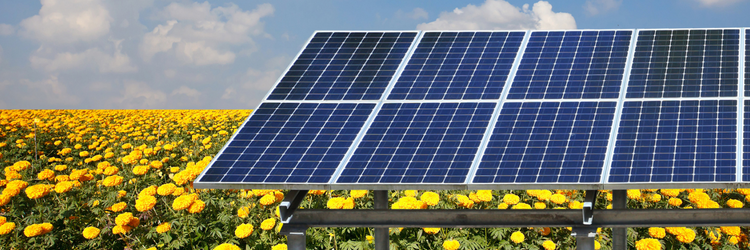Can Solar Energy Help Heal Our Land?
The NOAA National Centers for Environmental Information (NCEI) says that the United States has sustained 338 weather and climate disasters where damage costs reached or exceeded $1 billion since 1980. These events cost more than $2.295 trillion.
In 2022 (as of October 11th), there have already been 15 of these large-scale disasters (drought, floods, severe weather including cyclones, and fire). The annual average is about 7.7 from 1980-2021, but that number has increased to 17.8 for the past five years.
We must move to sustainable, green energy—like solar. Solar farms, however, take up large swathes of land, and we do not yet understand their impact on the soil they sit on.
Researchers at the U.S. Department of Energy’s (DOE) Argonne National Laboratory are partnering with other state, national, academic, and private institutions to study those effects. The team will focus on the changes in soils once pesticide use and annual tilling stop, and the land around solar farms is allowed to rest as part of the Deploying Solar with Wildlife and Ecosystem Services Benefits (SolWEB) funding program.
The three-year project will first standardize sampling and the analytical and modeling methods for measuring the changes in the soil’s chemistry over time. Then, solar farms around the nation will implement the procedures to establish baselines and demonstrate their effectiveness. The team will then create a nationwide solar soils database to determine and maximize solar farms’ long-term, beneficial impact on the earth.
Besides clean energy, they also hope these solar farms will present an opportunity for active land and vegetation management to restore ecosystems. Some of these farms are planted with native wildflowers and could provide environments for pollinators like bees and butterflies.
“If we hope to have an inhabitable planet for our kids and grandkids, we need to get serious about renewable energy sources — including solar power. As we take steps to combat the climate crisis, we must conduct more research to ensure that we can preserve and protect our ecosystems and wildlife as we transition to renewable energy,” said U.S. Senator Richard Durbin, Illinois. ”I’m encouraged by DOE’s trust in Illinois’ world-class research facility, Argonne National Laboratory, and congratulate the Argonne scientists selected to lead this research.”
Collaboration is central to this broad-scale national effort. Argonne is partnering with several universities, state agencies, private and non-governmental organizations, and other national labs to develop, test, and model methods for investigating solar facility soil ecosystem services. Project partners include:
- Brookhaven National Laboratory
- Columbia University
- Fermi National Accelerator Laboratory
- Midwest Tribal Energy Resources Association
- Minnesota Department of Commerce
- National Renewable Energy Laboratory
- Stantec
- The Soil Inventory Project
- University of Illinois Chicago
- University of Illinois Urbana-Champaign
- University of Minnesota

